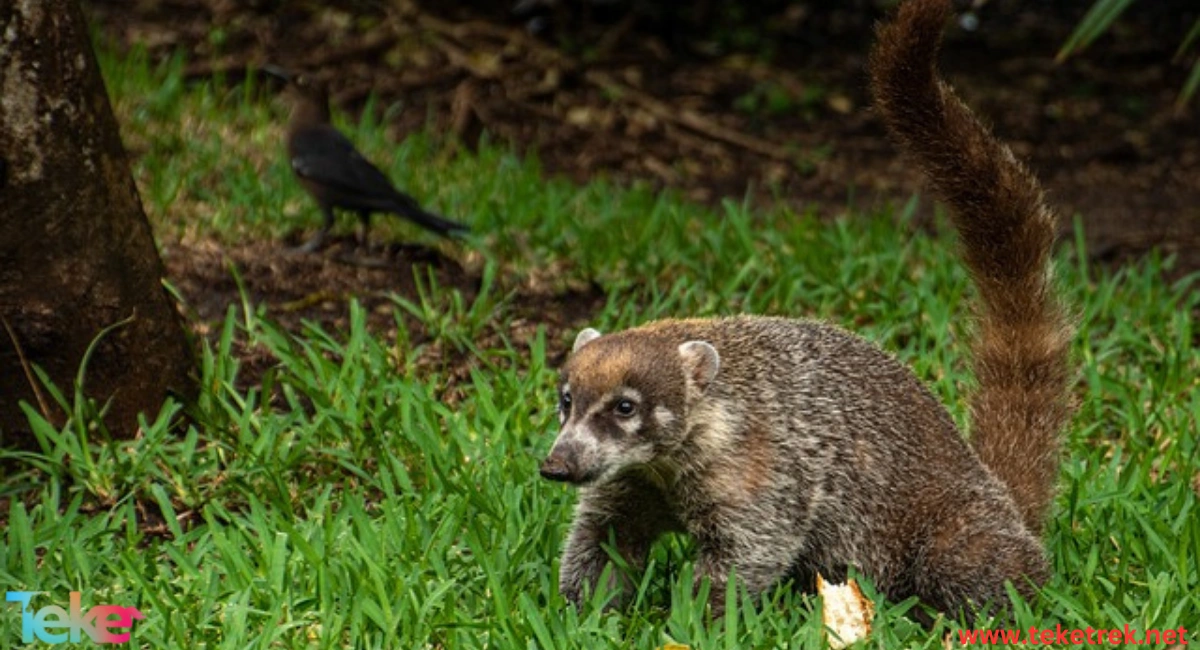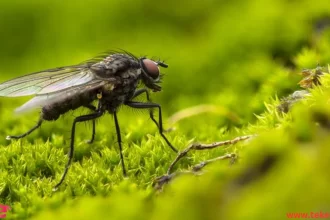The Egyptian weasel belongs to the phylum Chordata, subphylum Vertebrata, class Mammalia, and family Mustelidae. Its genus is Mustela.
The Egyptian weasel has short legs, a small head, and small ears, while its tail is long and thin.
It has many distinctive characteristics that we will learn about in the following article from teketrek:

What are the characteristics of the Egyptian weasel?
The Egyptian weasel has a distinctive body shape.
It has a long, slender, and elongated body, with short legs and also a short tail.
The average body size of the Egyptian weasel, measured from head to body length, is 289 mm for males and 242 mm for females.
The average tail lengths for males and females are 116 mm and 99 mm, respectively, which is about 30-40% of the body size.
The size of the Egyptian weasel is larger than that of the common weasel.
The Egyptian weasel does not suffer from thermoregulation issues, unlike the smaller weasel that lives at higher latitudes.
The Egyptian weasel is distinguished by its brown back, and the ventral side varies from white to creamy yellow, with an uneven margin between the sides.
The tail of the Egyptian weasel is monochromatic, with a slightly darker tip compared to the body and tail.
Where does the Egyptian weasel live?
It is located in northern Egypt on the lower Nile Valley, extending from Alexandria in the east to Port Said, south across the Delta, and south to the city of Beni Suef.
The Egyptian weasel is a terrestrial animal that is mostly found in urban areas and lives harmoniously with humans.
Only a few samples have been collected outside cities, mostly in cultivated fields.
Egyptian weasels are often found in public buildings and homes, where they are regularly trapped in underground grocery stores.
What is the lifestyle of the Egyptian weasel?
The Egyptian weasel is a very solitary and territorial animal.
Males mark their territorial boundaries with urine and feces.
A female Egyptian weasel may establish an area within the male’s territory where she will build a nest and defend this area from other females.
Egyptian weasels are active at night, but can also be seen during the day.
The Egyptian weasel is a fierce hunter, stalking its prey covertly to avoid detection by foxes and birds of prey.
The Egyptian weasel can chase its potential prey through tunnels or catch prey in the burrow and kill it in the open.
What does the Egyptian weasel eat?
The Egyptian weasel is a carnivorous animal that eats a large amount (about 50%) of vegetables and fruits, in addition to human food waste.
The Egyptian weasel feeds on animals, including rodents, poultry, rabbits, as well as fish and insects.
Reproductive stages of the Egyptian weasel:
The Egyptian weasel is polygamous, meaning that males and females have multiple partners.
During courtship, the pair chatter, and after mating, the female may stay with the male or the pair may separate and look for other partners.
The female lays her young in a nest in a cavity, crevice in a wall, or pile of rocks.
She can produce up to 3 litters per year, each consisting of 4 to 9 individuals.
The gestation period usually lasts from 4 to 5 weeks, after which the young are born helpless and naked.
The young Egyptian weasels become independent after 10 weeks of age and reach reproductive maturity at about 4-8 months.

Frequently Asked Questions about the Egyptian Weasel:
What threats does the Egyptian weasel face?
The Egyptian weasel is not currently considered threatened, but in the future, it may be threatened by chemicals such as rodenticides and predation by domestic dogs and diseases.
What is the size of the Egyptian weasel?
The average size of the Egyptian weasel, measured from head to body length, is 289 mm for males and 242 mm for females.
What does the Egyptian weasel eat?
The Egyptian weasel usually goes out at night to look for food and may also go out during the day.
It hunts mice, birds, ducks, rabbits, insects, frogs, lizards, rabbits, flies, and snakes.
What is the hunting ability of the Egyptian weasel?
Although it is one of the smallest carnivores, it is very bold and daring, not shy.
It has a strong sense of smell and sharp vision, and it preys on mice and squirrels.
What is the role of the Egyptian weasel in the environment?
It contributes to regulating the numbers of mice and insects, and therefore plays an important role in the ecosystem.
Is the presence of the Egyptian weasel in farms a problem?
Yes, its presence in farms is a problem, as it can suck the blood of more than a hundred chicks in a day.
It is known in the Egyptian countryside as “chick strangler” for its ability to eliminate large numbers of chicks.
In conclusion
, the IUCN Red List and other sources do not provide a total number for the Egyptian weasel.
Currently, this species is classified as Least Concern (LC) on the IUCN Red List, and its numbers are increasing.
Refrences





